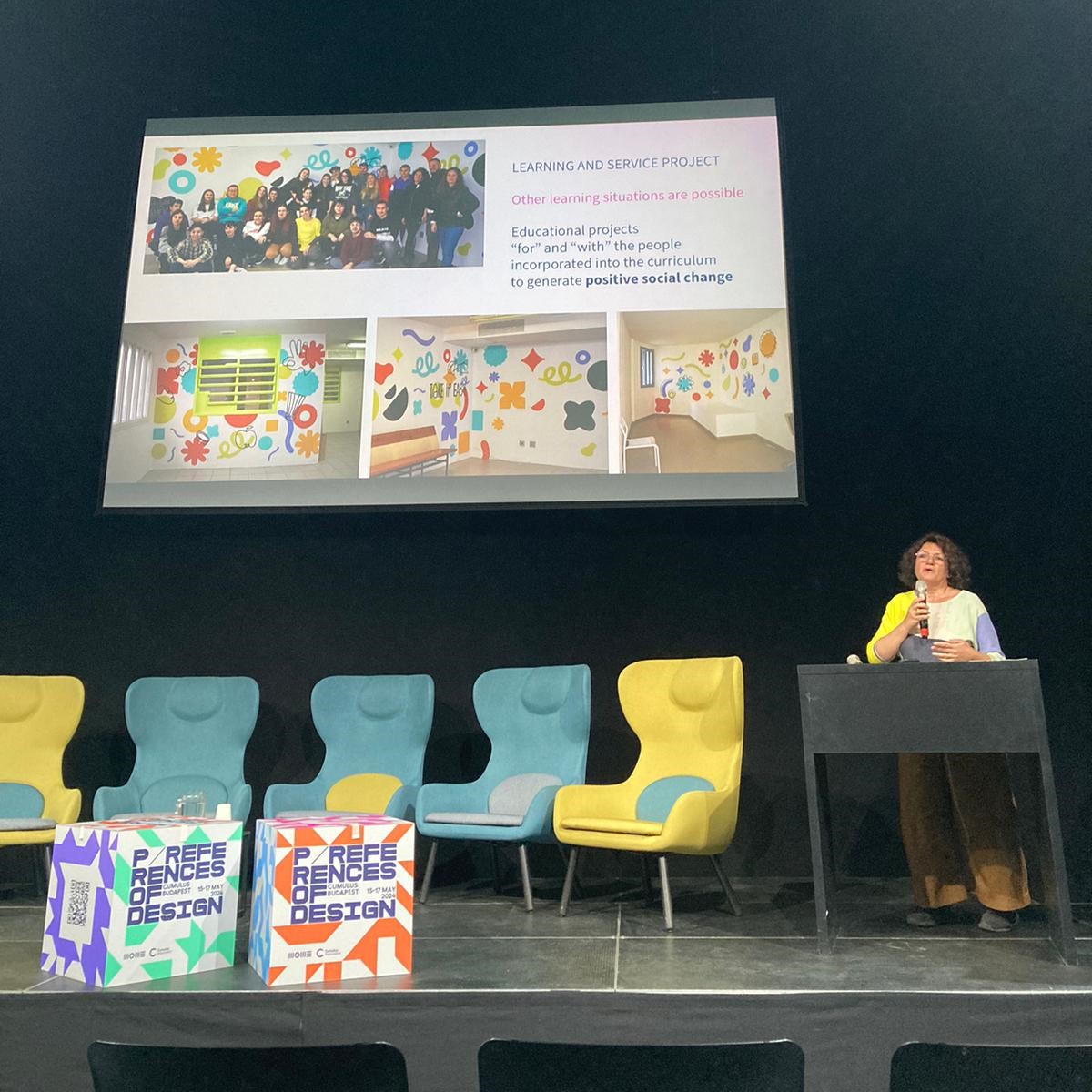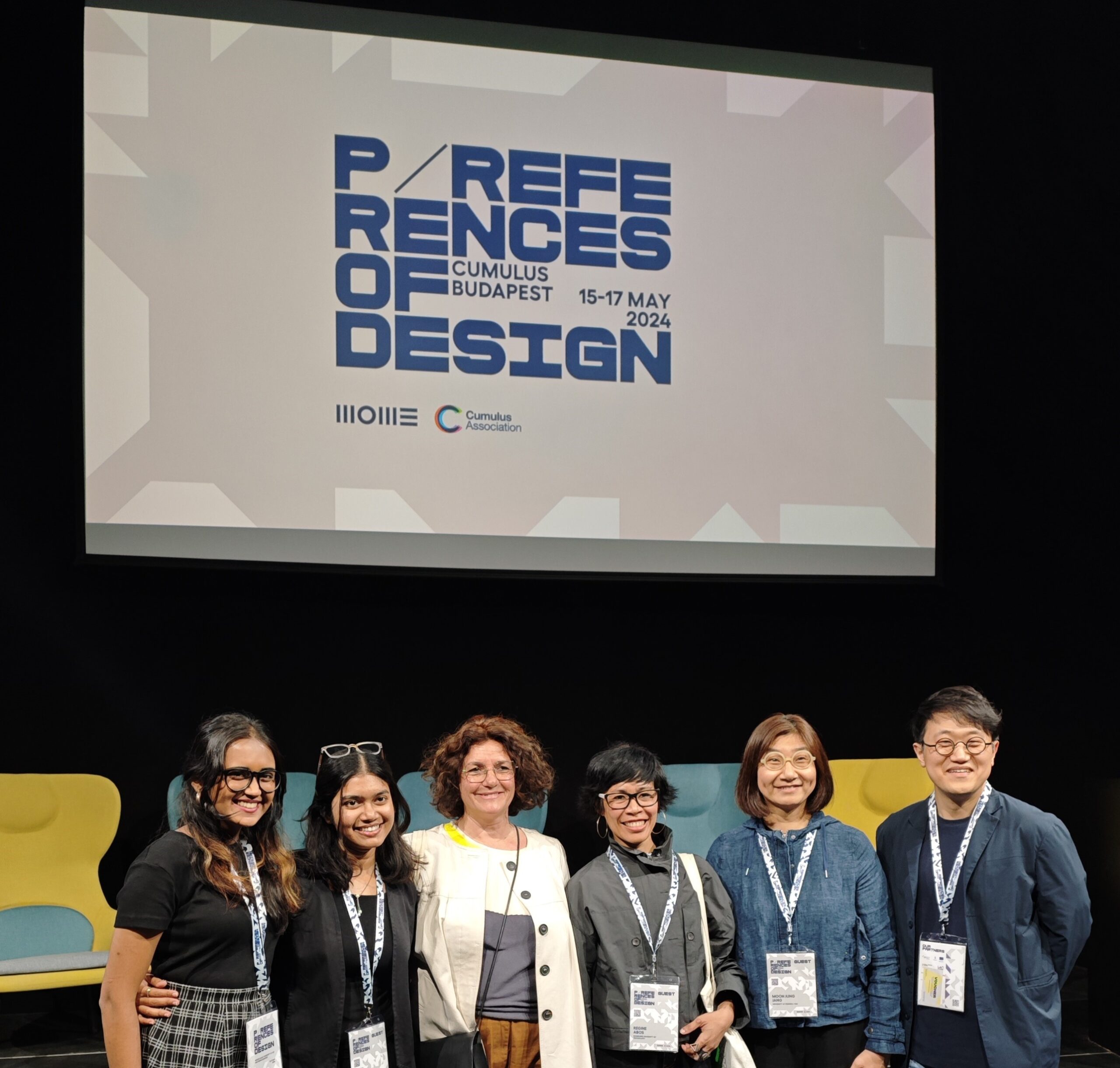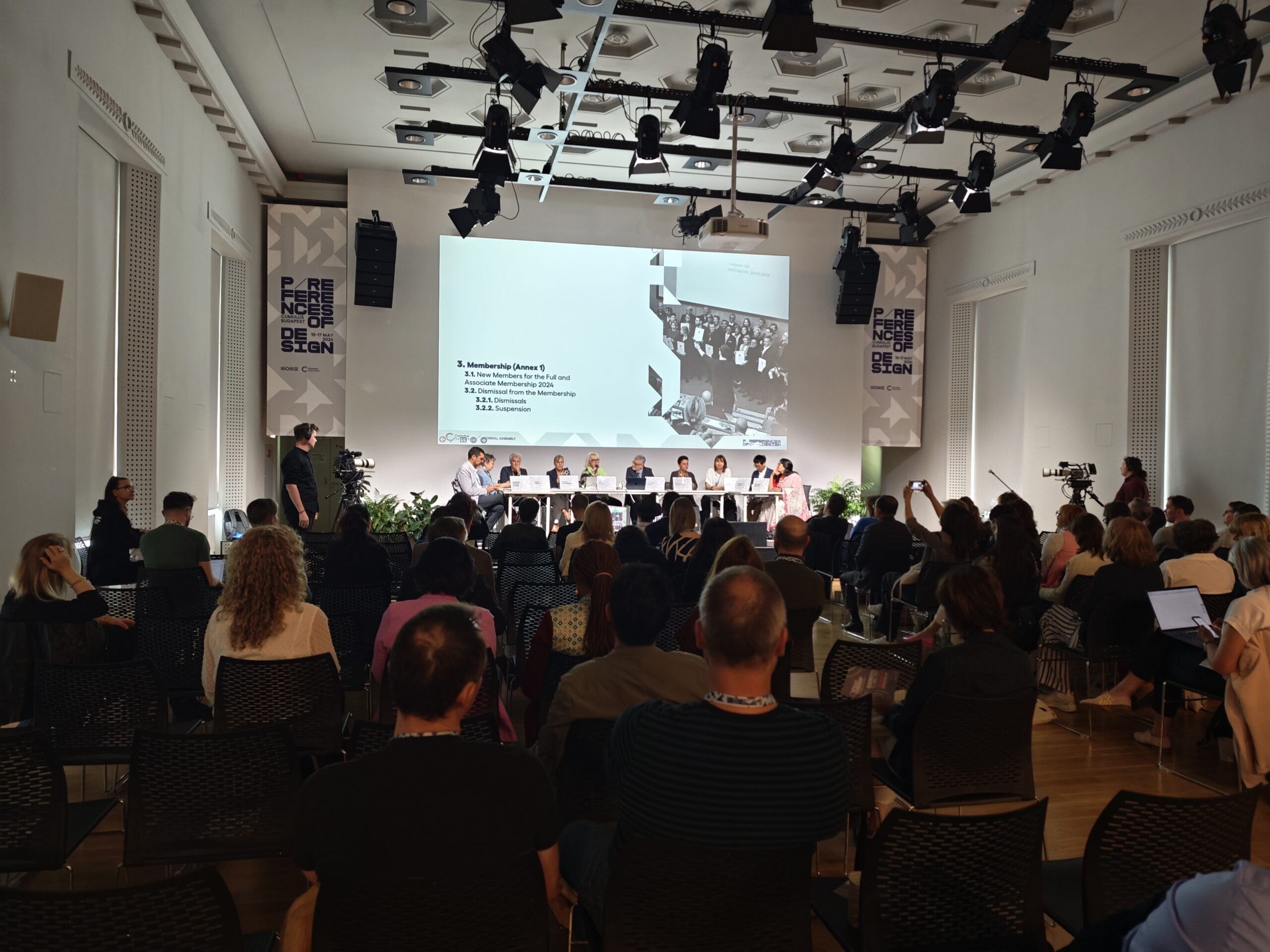On 15, 16 and 17 May, the CUMULUS Budapest 2024 Conference took place at the Moholy-Nagy University of Art and Design MOME, where tensions and parallels in contemporary design culture were explored in a context in which the world is facing ecological, socio-economic and geopolitical challenges. In this framework, the Professor Eugenia Pérez de Mezquia of the Department of Interior Design and ESDA Desis Lab, within the field of research in design for social innovation, presented the communication "Humanizing high security spaces. Reformatories for minor offenders - The teaching and practice of design for social innovation towards vulnerable communities" in the track "Ways of living together". by Dr. Boris Fehér, Senior Research and Director of MOME Innovation Center's Social Design Hub, presentation moderated by Dr. Juan Velasquez, Professor at Linnaeus University, Sweden.

"Humanizing high security spaces. Reformatories for minor offenders - The teaching and practice of design for social innovation towards vulnerable communities".
AUTHORS
Eugenia Pérez de Mezquia, Álvaro Albajez, Vanesa Gil, María Antonia Valverde
ESDA Higher School of Design of Aragon
Abstact
Community-engaged design project between the students of design of Escuela Superior de Diseño de Aragón (ESDA) and the minor offenders interned in the Education and Internment Center by Court Order (CEIMJ Juslibol) Zaragoza, Spain.
The focus of the project is on teaching our students and practicing design skills with people living in poverty or at risk of exclusion, working with vulnerable communities to accelerate the transition to a fair and ecological society.
The practice of design involves intervention in a social group, and therefore we should incorporate the anthropological dimension in methodological terms. Man being spatial, all experience depends on the place where it happens (Herrera & De Oña, 2016).
A collaborative effort between students and vulnerable communities contributing to various aspects of design. A different approach and change of mindset applicable to teaching social design and design for social innovation (Mazini, 2015).
A reformatory for minor offenders is neither a prison, nor should it look like one (Pol, Esteve, García-Bores & Llueca, 1992).
Educational-formative and welfare institutions, and more explicitly correctional institutions, are organisations that have served, by satisfying the urgent basic needs of the vulnerable population, as an effective method of social control, and architecture plays a very important role in this. The main objectives are:
- The better use of space and its environmental conditions as spatial resources of intervention to facilitate therapeutic treatment.
- More dynamic environmental conditions that facilitate appropriation of the space by the inmates.
The first project "My personal space" developed in 2023 by the students of the 3rd year of Interior Design focuses on the individual room of the inmates, developing 14 proposals for more friendly and personalized rooms through the design of interior details and complying with the necessary safety conditions.
Surveys were conducted to measure the mood of the design students before, during and at the end of the project. The students who were initially against working directly with minor offenders, were in the end satisfied that they were actively involved.
During the ESDA DESIS Social Design Days experiences and projects of social innovation are shared publicly. Our students explained the project to the educational community.
The second project "Humanizing high security spaces" developed in 2024 by the 3rd year Interior Design students with the collaboration of 3rd and 4th year Graphic Design students focuses on the reception module, a liminal space where the minor is admitted for the first time and spends his first week of adaptation to the centre until he is transferred to the module that correspond to him with other inmates.
Design students learn and discover in an immersive way the social dimension of design by developing new interpersonal skills.
The proposals were born from the dialogue between the designers and the inmates, as a process of deep knowledge of their needs and expectations, bringing together new points of view through participatory design.
The result confirms how small gestures in interior design make possible great improvements, creating an environment conducive to positive therapeutic development work.
REFERENCES
⦁ Expósito, D., & Peiró, P. (2023c, December 10). 492 days in the life of child 21. https://elpais.com/espana/madrid/2023-12-10/492-dias-en-la-vida-del-menor-numero-21.html#.
⦁ Farbstein, J., & Wener, R. E. (1982). Evaluation of Correctional Environments. Environment and Behavior, 14(6), 671-694. https://doi.org/10.1177/0013916582146003
⦁ Herrera Pastor, D., & De Oña Cots, J.M. (2016). The importance of the learning environment. Ecological pedagogy in a juvenile centre. Fuentes Journal, 18(1), 77-90. [Accessed on: 24/01/24]. doi: doi: http://dx.doi.org/10.12795/revistafuentes.2016.18.1.05
⦁ Manzini, E. (2015). When everyone designs. An introduction to design for social innovation. Madrid: Experimenta Theoria.
⦁ Pol, E., Esteve, J., García-Bores, J., & Llueca, J. (1992). Juvenile reform centres: the environmental dimension. PSYCHOSOCIAL INTERVENTION, VOL 1 (No 2).
KEYWORDS
Design for social innovation, Vulnerable communities, Reformatories for minor offenders, Environmental psychology, Liminal spaces



The Cumulus Association is one of the world's leading organisations in design and art education. With 357 institutions in 66 countries, including countless flagship universities and knowledge centres, it is the most important professional network in the academic world, its members can attend several major conferences each year, share knowledge and research results in working groups and discuss the hottest topics in design, innovation, education and research.
Website: https://cumulusbudapest2024.mome.hu/index.html

